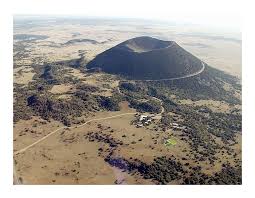Mystery Science
Science and I are getting along better these days.
Growing up, and far into adulthood, I never enjoyed science. It was too…unpredictable. And it never failed that what I expected to happen, did not in fact happen. This frustrated me to all ends. Now, I find myself having to teach it. Lord have mercy, and He has.
My husband has a scientific mind. The type that are never satisfied with the activity at hand, but has the innate ability to ask the inevitable, “What if we did…”. This is also how Builder thinks and revels in getting to do science activities with Daddy. However, doing science each week with Daddy doesn’t exactly work well into our schedule. So though it works every now and then, we needed a different solution for a more consistent science experience.
So, I have pressed on and pressed into the Lord to help me in this area. One of my realizations is that science truly sets you up to continue learning. There is no failure in science, only an opportunity to learn more. In the past, every time my outcome did not match my expectation I became frustrated at my “inability to do science”. Now I realize when something doesn’t work out as expected, we get to figure out why. This leads to a much deeper understanding of the topic at hand.
Now that I wasn’t scared of, or even angry with, science I was better equipped to decide how we wanted to approach it. We did some individual units found here and there on the web. However, I really felt like I was shooting in the dark when it came to a forward motion in science. We were just kind of hit-and-missing. Recently, I found MysteryScience.

Builder was the main focus for this choice, however, Princess has jumped right in and joined us in science time. MysterScience has many units to offer from Plants to Weather to Energy/Motion and beyond. The material age range listed is from 5-12 years old. This seems to be about right on the lower end since Princess is 5 and can join right in. We don’t have experience at the upper level as of yet.
Each unit has a set of mysteries revolving around the theme. We are currently working our way through Plant Adventures and are on Mystery 3 of 5. Each Mystery has three parts:
Exploration
Each Mystery has a 20-45 min slideshow/video that is narrated and sets up the mystery at hand. This section teaches all the information along the way that is needed for the upcoming activity. The video pauses every now and again with a clarifying or critical thinking question to discuss with your student.
Activity
After each exploration, there is a hands-on activity. From our experience, these have been very clear and the video leads you step-by-step through the instructions. This has made it very easy to step into a facilitating role. The activities we have completed have been anywhere from 25-35 min long. Both Builder (7) and Princess (5) have loved them.

The activity from Plant Adventures – Mystery 2: Do Plants Eat Dirt? (Growing radish seeds)
Optional Extras
Each mystery has optional extras to add to and extend learning. We have used some of these, but not all. The total process done in one day pushes our boundaries of focus. I have tried splitting the whole thing into a two to three day process, but the kids are so excited to do the activity once we get to it that I have not wanted to stop them from doing so.
Mystery Science has a free trial and also pricing for homeschoolers, as well as other school pricing. We are still in our free trial until June 2017 and we will be purchasing the full version once our trial is over. It has been so much fun and the work put into it by the creators is spot on. If you have been searching for a good solid science curriculum, I encourage you to check out www.mysteryscience.com. For me, it was well worth the exploration.
Your Turn to Play ~ What has been the most difficult subject for you to step into as teacher?




































